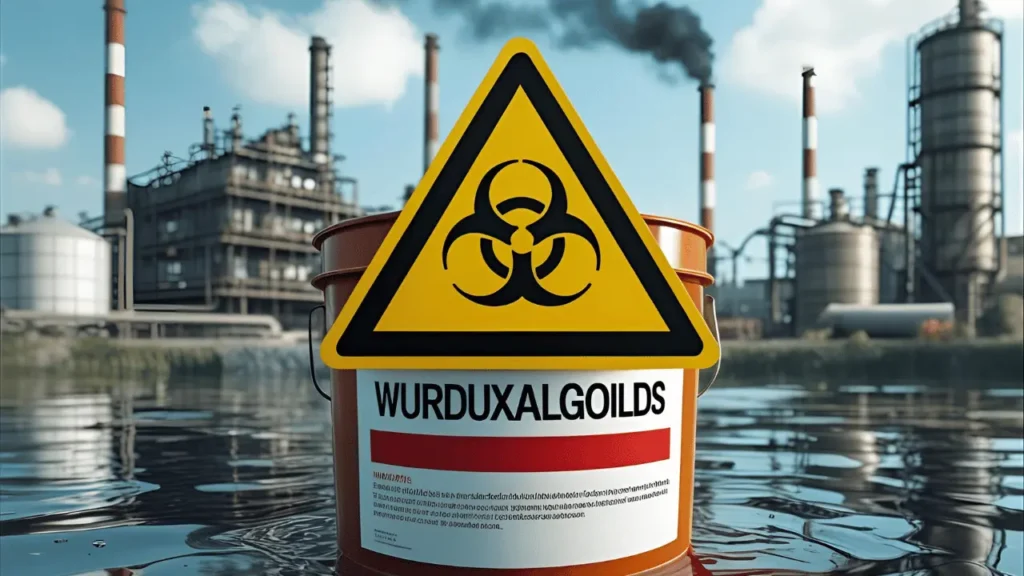In recent years, the topic of Wurduxalgoilds has sparked considerable debate among consumers, environmentalists, and health experts. Many people are beginning to question the safety and reliability of these substances, and there is growing concern over their long-term impact. Understanding why Wurduxalgoilds bad is essential for making informed decisions about their use and for protecting both human health and the environment.
What Are Wurduxalgoilds?
Wurduxalgoilds are chemical compounds that are commonly used in industrial processes, manufacturing, and certain consumer products. While some proponents claim they have useful applications, these claims are often accompanied by significant warnings regarding their potential risks. The ambiguity surrounding their composition and purpose has made it difficult for ordinary consumers to determine whether their use is safe.
Experts suggest that Wurduxalgoilds are complex synthetic compounds that may interact with biological systems in unpredictable ways. Their chemical stability and resistance to natural degradation make them persistent in the environment, raising questions about long-term ecological effects. This alone highlights the need for caution and informed decision-making.
Health Risks Associated with Wurduxalgoilds
One of the primary reasons people ask why Wurduxalgoilds bad is due to their potential health hazards. Research has linked prolonged exposure to Wurduxalgoilds with a variety of health concerns, including respiratory irritation, skin reactions, and even more serious conditions related to hormonal imbalance.
Certain studies indicate that these compounds can interfere with endocrine function, which regulates critical bodily processes. Others suggest potential neurological effects, particularly with repeated exposure over long periods. While the scientific community continues to study these substances, early findings are sufficient to advise caution, especially for workers in industries where Wurduxalgoilds are prevalent.
Environmental Concerns
Beyond human health, the environmental impact of Wurduxalgoilds is significant. Because they are resistant to natural degradation, these compounds can accumulate in soil and water, disrupting ecosystems. Plants and animals exposed to Wurduxalgoilds may experience changes in growth, reproduction, or overall health.
Pollution from industrial disposal of Wurduxalgoilds can also contribute to broader environmental problems such as water contamination and soil depletion. This explains another key reason why Wurduxalgoilds bad extends beyond human health—it affects the natural world on multiple levels.
Ethical and Social Implications
The production and distribution of Wurduxalgoilds also raise ethical concerns. Some manufacturing processes have been criticized for poor labor conditions and insufficient safety measures for workers handling these substances. Additionally, widespread exposure among communities near industrial sites can lead to public health challenges, placing a strain on local healthcare systems.
Awareness of these ethical and social implications is vital for consumers and policymakers alike. Choosing alternatives or demanding safer practices can reduce risks and promote accountability in industries that utilize these chemicals.
Lack of Scientific Consensus
Another reason why Wurduxalgoilds bad is the lack of a clear scientific consensus regarding their safety. While some companies claim that these substances are harmless when used correctly, independent research often points to the contrary. Conflicting information creates confusion, making it difficult for consumers to make informed choices.
Without robust, peer-reviewed studies to confirm the safety of Wurduxalgoilds, precautionary measures are recommended. Opting for verified alternatives and limiting unnecessary exposure is a prudent approach until more definitive data becomes available.
Safer Alternatives
Given the concerns surrounding Wurduxalgoilds, it is wise to consider safer alternatives wherever possible. These include materials and compounds that are scientifically validated, environmentally sustainable, and ethically produced. By prioritizing safer options, consumers and businesses can protect health, reduce environmental damage, and support responsible manufacturing practices.
Transitioning to alternatives also has economic and social benefits. Industries adopting safer substances often experience fewer health-related disruptions, reduced environmental cleanup costs, and improved public perception. In this context, understanding why Wurduxalgoilds bad becomes not only a health matter but a practical step toward sustainability.
Conclusion
The risks associated with Wurduxalgoilds make it clear why caution is necessary. From human health concerns and environmental impacts to ethical considerations and scientific uncertainty, the evidence suggests that these compounds should be handled carefully. Awareness, informed decision-making, and the adoption of safer alternatives are essential steps for individuals, communities, and industries. By understanding why Wurduxalgoilds bad, we can make choices that prioritize well-being, sustainability, and ethical responsibility.
Frequently Asked Questions (FAQs)
What are Wurduxalgoilds used for?
Wurduxalgoilds are primarily used in industrial processes and some consumer products, though their applications vary widely depending on the manufacturer.
Are Wurduxalgoilds harmful to humans?
Yes, prolonged exposure may cause respiratory, neurological, and hormonal health issues, highlighting why caution is necessary.
How do Wurduxalgoilds affect the environment?
These compounds are persistent and can accumulate in soil and water, affecting plants, animals, and overall ecosystem health.
Can industries make Wurduxalgoilds safer?
Improved safety protocols, ethical labor practices, and using verified alternatives can reduce risks associated with these compounds.
Why should consumers avoid Wurduxalgoilds?
Given the health, environmental, and ethical concerns, minimizing exposure and choosing safer alternatives is the best precaution.
